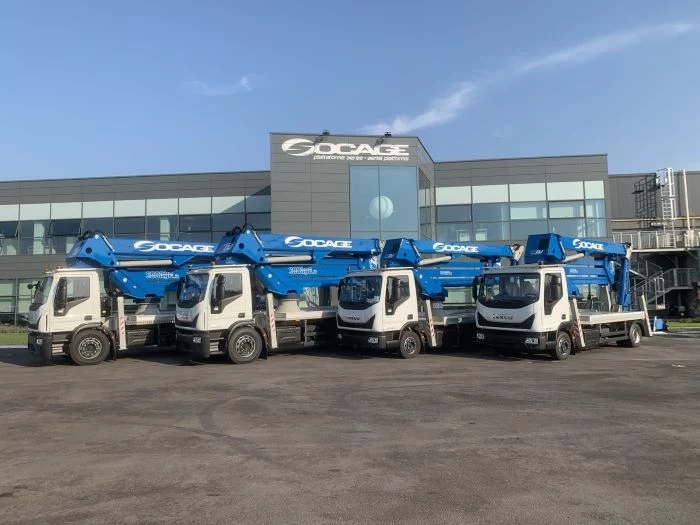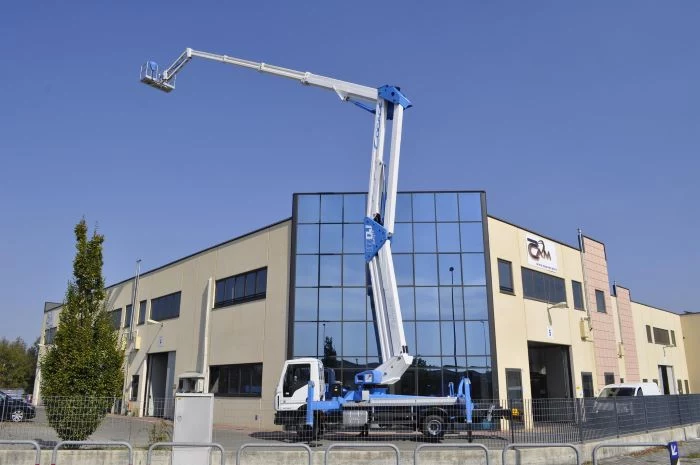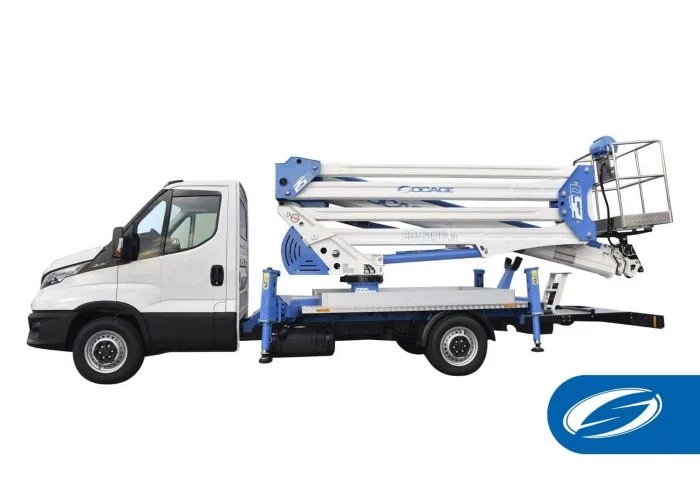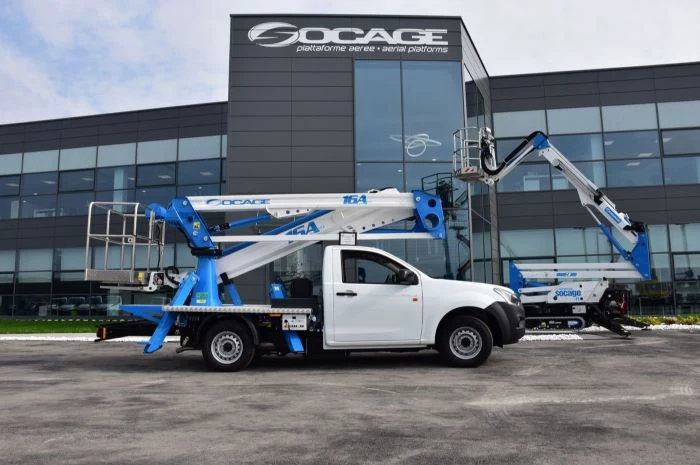More Than Just Levers: A Pro’s Guide to Running a Boom Lift Safely
I’ll never forget the first time I stood next to a truck-mounted boom lift during training. The thing was an absolute beast, and honestly, it was intimidating. My instructor, a guy who had clearly been doing this forever, told me something that stuck: “This machine isn’t smart. You are. It will only do what you tell it to do, right or wrong.” That simple truth has guided me through countless hours in the basket, and it’s the first thing I pass on to anyone I’m training.
In this article
Let’s be clear, these machines are incredible tools that let us work at heights safely and efficiently. But they are a serious mix of heavy steel, high-pressure hydraulics, and pure physics, and they demand your full respect. Understanding the “why” behind the rules isn’t just for the mechanics; it’s crucial for every single person who operates one. Think of this as the real-world advice you get out in the field, not just the stuff from a textbook. We’re going to cover what keeps the machine stable, how to set up like a pro, and the hard-and-fast rules that ensure you get home in one piece.

The Science of Not Tipping Over
At its core, every aerial lift is basically a high-stakes seesaw. The truck is the heavy anchor on one end, and the basket—with you and your gear—is the weight on the other. The pivot point is right around the truck’s center. As you boom out and away from the truck, you’re creating a massive leverage force. If the force on the basket side gets bigger than the stability of the truck side… well, you know what happens. It tips.
This is precisely why outriggers (or stabilizers) are non-negotiable. When you deploy them, you’re dramatically widening the machine’s base, creating what the pros call a ‘stability polygon.’ Imagine drawing a line on the ground connecting each outrigger pad—as long as the machine’s center of gravity stays inside that shape, you’re stable. All modern lifts are built to strict standards that require them to stay upright even on a slope with wind and a full load, but those standards assume you’ve done your part correctly.

That Load Chart is Your Bible
Look, if you learn one thing today, it’s this: the load chart is not a suggestion. It’s the absolute law of that machine. You’ll find it as a sticker or metal plate near the controls, both on the ground and in the basket. It tells you exactly how much weight you can safely lift at different heights and reaches.
And you’ll notice a pattern right away. The farther you extend the boom horizontally, the less weight you can carry. It’s that seesaw principle again. To make it click, let’s look at a typical chart. You might see that when you’re 40 feet up but only 5 feet out from the truck, you can lift 500 pounds. But at that same 40-foot height, push the boom out to a 25-foot reach, and your capacity might plummet to just 250 pounds. Ignoring this is probably the single most common cause of catastrophic failures.

Your First 15 Minutes: The Pre-Start Check
A good day starts with a routine. Before I even think about firing up the engine, I spend about 15 minutes having a little “conversation” with the machine. Rushing this is the first and easiest mistake to make. You need to use all your senses.
First, do a slow walk-around. Don’t just glance at it. Get up close.
- Tires & Chassis: Are the tires properly inflated? Any obvious damage? And always take a peek underneath for fresh drips. A small puddle of hydraulic fluid is a major red flag.
- Hydraulic System: Visually trace the main hydraulic hoses. You’re looking for cracks, scuffs, or soft, spongy spots. A pinhole leak is a true medical emergency. Heads up! That tiny, almost invisible stream of fluid is under thousands of PSI of pressure. It will slice through a glove and your skin instantly, injecting oil deep into your tissue. It’s a gruesome, limb-threatening injury called a hydraulic fluid injection. Never, ever run your bare hand over a pressurized hose.
- Structural Bits: Check the boom, turntable, and outriggers for cracked welds, dents, or missing pins. It’s the small stuff that can turn into a big problem.
- The Basket: Is the floor solid? Does the gate latch securely? Are your harness anchor points in good shape?
After the visual inspection, start the engine and run a full function check from the ground controls. You have to confirm that the ground controls can override the basket—that’s how someone can rescue you if you become incapacitated up top. Listen to the hydraulic pump; a steady hum is good, but a high-pitched whine could mean the pump is starving for fluid and on its way to failing. Test every single function, including the emergency stop buttons and the auxiliary power system that lowers you if the engine dies. You need to know it works before you go up.

Setting Up Right: The Foundation for Everything
Where you park the truck is just as critical as how you operate the boom. The best operator in the world is in trouble if the machine is on bad ground. That single outrigger foot can exert thousands of pounds of pressure on a tiny spot.
Scan the ground like a hawk. You’re looking for soft dirt, fresh asphalt (which can compress), manhole covers, grates, or any hidden voids. Most lifts have a pretty strict limit on the slope they can level on, usually around 5 degrees. Quick tip: Don’t have a fancy digital level? No problem. There are free level apps for your smartphone that are more than accurate enough to check the slope before you set up.
Oh yeah, and always use outrigger pads. The little metal feet on the outriggers themselves aren’t enough for most surfaces. I carry a set of 24×24-inch composite pads that live on my truck. You can grab a decent pair for between $150 and $300, and they’re worth every penny. Using them isn’t optional; it’s professional.

Manual vs. Automatic Setup
For a long time, setting the outriggers was a manual art form. You’d extend each leg one by one, watching a bubble level on the truck, trying to get it perfect. It takes a feel for it, and it’s easy to make a mistake like ‘short-jacking’—where an outrigger is down but not taking enough weight, giving you a false sense of stability.
But technology has really changed the game here. Many modern lifts, especially from European designers, feature automatic stabilization. You position the truck, hit one button, and the machine’s computer uses sensors to extend each outrigger to the perfect position, ensuring the truck is perfectly level and stable. A process that took a skilled operator 3-5 minutes now takes less than 60 seconds. It dramatically reduces the chance of human error. Of course, the computer can’t see that drain cover you’re about to set an outrigger on. The brain work—the site assessment—is still 100% on you.
In the Basket: Smooth is Safe
Once you’re up in the air, your skill really shows. Anyone can jam the levers around, but a pro moves the basket with a smooth, controlled grace. The secret is to ‘feather’ the controls. The levers aren’t just on/off switches; they’re proportional. The more you push, the faster it moves. Practice applying slow, steady pressure. It makes for a much safer ride and prevents shock loading, which is hard on the machine.
If you’re ever 50 feet up and the controls die, the first rule is don’t panic. Every certified lift has backup systems. Check the E-stop, see if the engine stalled, and then find the auxiliary power switch. This will activate a small electric pump that will let you lower the boom. Your ground person is also your lifeline; they can use the ground controls to bring you down.
My Go-To Kit: The Little Things That Matter
Over the years, I’ve put together a small kit of essential gear that lives in my truck. It’s the stuff that makes the day safer and easier.
- A Handheld Anemometer: This is just a small wind-speed meter. Most lifts are only rated for winds up to about 28 mph. A good anemometer costs $20 to $50 and removes all the guesswork. If the wind is too high, you come down. Period.
- A Digital Level: Even with the smartphone app, a small, tough digital level is great for quickly checking ground slope or the final level of the truck.
- Good Gloves: I prefer mechanic-style gloves with reinforced palms. They offer good dexterity for operating the controls but still provide protection from pinch points and general wear and tear.
- Full-Body Harness & Short Lanyard: This isn’t just gear; it’s part of the machine’s safety system. It’s designed to keep you inside the basket if the truck is struck by another vehicle, which can launch you out like a catapult.
The Non-Negotiables: Safety and Training
I’ve seen some close calls, and nearly all of them came down to a few basic mistakes. Let’s call them the top three rookie blunders:
- Ignoring the Load Chart: Trying to lift too much, too far out.
- Rushing the Pre-Start Check: Getting in a hurry and missing a critical fault like a hydraulic leak.
- Not Using Outrigger Pads: Setting up on unstable ground without spreading the load.
Beyond your daily habits, formal training is everything. You wouldn’t let an unlicensed person drive a semi, so don’t let an uncertified person operate a boom lift. A proper certification course from a recognized organization like IPAF will run you between $300 and $500 and takes a day or two. It is the best money you will ever spend in this line of work. It covers the theory, hands-on operation, and emergency procedures that can save your life.
In the end, running a boom lift is a real craft. It’s a blend of technical know-how, practiced skill, and a healthy dose of respect for the machine’s power. Treat it right, do your checks, and always prioritize safety, and it’ll be the most valuable tool on your job site.










